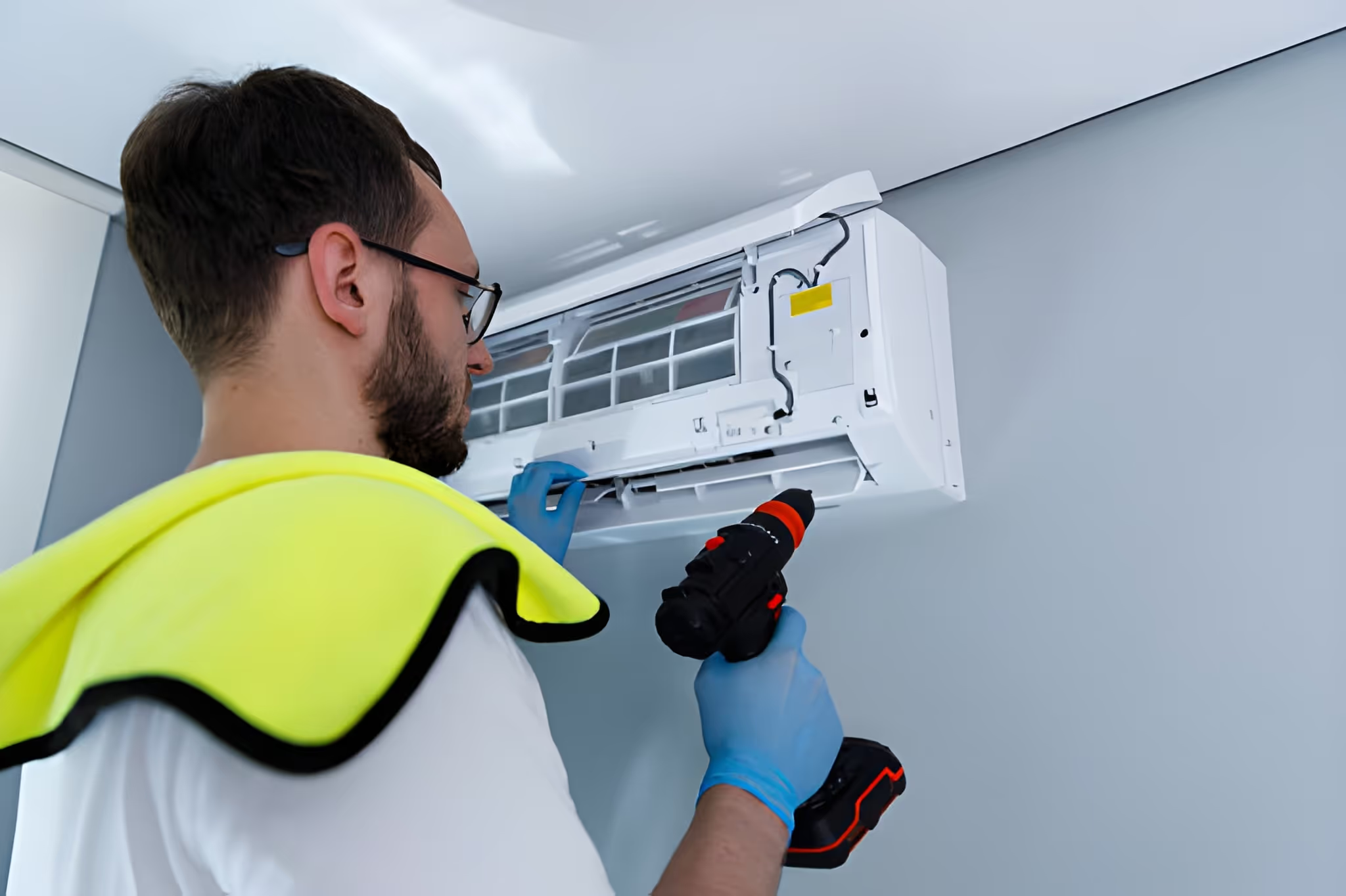Mini-Split Tune-Up in Lakeland, FL


Why a tune-up matters for Lakeland homes
Lakeland’s humid subtropical climate accelerates coil dirt buildup and encourages microbial growth in drain pans and condensate lines. Pollen season and frequent yard debris can clog outdoor units, and the extended cooling season increases compressor run-time, raising the risk of premature component failure. Regular tune-ups restore system efficiency, reduce energy consumption, improve comfort, and catch developing faults before they become costly emergencies.
Common mini-split tune-up issues in Lakeland
- Clogged or dirty filters reducing airflow and indoor air quality
- Dirty evaporator or condenser coils causing poor heat transfer and higher run times
- Restricted condensate drains and mold buildup leading to water leaks or odors
- Low or incorrect refrigerant charge from slow leaks or improper initial charging
- Loose or corroded electrical connections that create unsafe operating conditions
- Fan motor wear, unbalanced blower wheels, or obstructed outdoor fan causing noise and reduced performance
- Thermostat or control calibration drift resulting in short cycling or temperature swings
- Vibration and mounting issues amplified by frequent on/off cycling
Typical tune-up checklist
A comprehensive mini-split tune-up follows a clear diagnostic and preventive workflow. Typical items included are:
- Visual inspection of indoor and outdoor units for physical damage, pests, and debris
- Filter cleaning or replacement recommendation based on condition and type
- Evaporator coil and condenser coil cleaning using appropriate soft brushes, coil cleaners, and gentle rinsing to restore heat transfer
- Airflow checks across indoor units with measurements or sensible evaluation to confirm adequate supply and return flow
- Refrigerant level verification and leak detection using gauges and electronic leak detectors; record operating pressures and temperatures for performance baseline
- Condensate drain and pan inspection and cleaning to remove standing water and biofilm; test drain flow and water safety switches
- Electrical inspection: tighten terminals, inspect contactors, capacitors, and fuses, and measure amp draw and voltage for components under load
- Thermostat and control calibration, including remote control and controller communication checks
- Noise and vibration inspection: check mounts, fans, and compressor operation; listen for abnormal bearings, valves, or refrigerant flow sounds
- System performance run test: measure supply and return temperatures, observe temperature split, and verify proper cycling for both cooling and heating modes if applicable
- Safety and operational checks: test safety controls, defrost operation on heat pump models, and confirm correct mode transitions
What to expect during the service visit
A professional technician will begin with a visual and operational inspection, then perform cleaning and diagnostic steps methodically. Filters and accessible coils are cleaned first to allow accurate airflow and temperature measurements after cleaning. Refrigerant checks and electrical testing happen while the system is under normal operating load to capture accurate data. Expect the technician to document baseline readings like suction and discharge pressures, amperage, and temperature differentials so you have a record of system health over time. Any recommended repairs for leaking refrigerant, worn electrical parts, or failing motors will be identified and explained in plain terms along with the likely consequences of deferring work.
Expected outcomes and benefits
After a proper mini-split tune-up you should notice:
- Improved cooling efficiency and shorter run times during peak afternoon heat
- Quieter operation through corrected fan or compressor issues and balanced components
- More consistent indoor temperatures and fewer short cycling events
- Reduced risk of unexpected mid-season failures due to tightened connections and early detection of weak components
- Better indoor air quality from clean filters and drains, and reduced mold and odor issues in humid months
- Longer equipment life and preserved factory performance by keeping refrigerant and electrical systems within specification
Recommended frequency and maintenance plans
- Standard recommendation: at least one comprehensive tune-up per year, scheduled before the hottest months in Lakeland.
- For homes with pets, high pollen exposure, or heavy year-round use: consider biannual service (spring and late summer) to address accelerated filter and coil fouling.
- For multi-zone or high-use installations: establish a seasonal maintenance plan with documented visits and baseline performance records to track gradual changes.
Common plan types include a one-time seasonal tune-up, an annual maintenance check, and a biannual service agreement that includes priority diagnostic testing and progressive performance reporting.
After-service tips and signs to watch for
- Replace washable filters on a schedule based on use and indoor conditions; check monthly during high pollen or heavy use periods.
- Keep the outdoor unit clear of grass, leaves, and debris; trim vegetation to maintain airflow.
- Monitor for reduced airflow, unusual noises, water leaks, ice formation, or sudden increases in energy use—these are signs to book a diagnostic check.
- Retain the service record provided after each tune-up; baseline readings help technicians identify slow-developing issues early.
A properly executed mini-split tune-up tailored to Lakeland conditions preserves comfort, reduces operating cost, and minimizes the chance of disruptive failures when Florida heat is at its worst. Regular, documented service provides transparency about system health and helps homeowners make informed decisions about repairs, replacements, and efficiency improvements.
Service Areas


